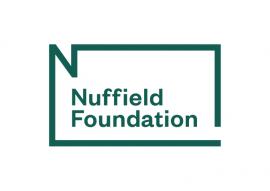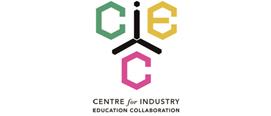Year 3: Rocks
This list consists of lesson plans, activities and video clips to support the teaching of rocks in Year Three. It contains tips on using the resources, suggestions for further use and background subject knowledge. Possible misconceptions are highlighted so that teachers may plan lessons to facilitate correct conceptual understanding. Designed to support the new curriculum programme of study it aims to cover many of the requirements for knowledge and understanding and working scientifically. The statutory requirements are that children are taught to:
- compare and group together different kinds of rocks on the basis of their appearance and simple physical properties
- describe in simple terms how fossils are formed when things that have lived are trapped within rock
- recognise that soils are made from rocks and organic matter.
Visit the primary science webpage to access all lists.
- ALL
- Teacher guidance
- Information sheet
- Activity sheet
- External link
Teacher guidance
The Variety of Life Teachers’ Guide (Ages 7-12)
Providing activity ideas,background knowledge for teachers and misconceptions about fossils.
Ask children to bring in the oldest thing they have and place it on a timeline. Try creating a timeline including key events from history which they will have studied. Then ask them to place when they think the fossil will go. This will help children start to deveop an understanding of the timescale of fossil formation.
Dinosaurs
In this resource pupils will learn about geological time, different geological periods and how old the earth is. Activities include exploring dinosaur footprints then using stride length and leg length to calculate their relative speed, as well as investigating dinosaur food chains.
The rock cycle
In this resource pupils will examine and compare different kinds of rocks and learn that all rocks are made from a mixture of minerals. They look at how the three main rock types are formed and their properties. Pupils also look at how rocks change over time through erosion and weathering.
Information sheet
Fossils
This fact sheet for primary pupils explores what fossils are and how they form. It considers why scientists study fossils and what can they tell us about the ancient creatures and plants that once lived on Earth.
Mary Anning
A factsheet on Mary Anning, the famous fossil hunter and collector from the 19th century. She made many incredible discoveries and became famous throughout the scientific world as her work was extremely important to palaeontology, the scientific study of ancient life.
Activity sheet
Rocks: rocks and fossils
Be a rock detective in this series of lesson plans including full notes for teachers and all materials for running the lesson(except the rocks!)
From page 23 there are a series of whole class investigations, each focussing on a different way of working scientifically. Activity 10 on page 34 could be used when looking at which rocks erode the most and could be linked to writing a short conclusion after investigating.
Other activities include sorting and naming rocks, testing hardness and other properties, carrying out tests on soil samples and observing how rocks are used around the school.
Dinosaur Fossil Animation Sequence Activity
This computing animation project is a nice link to fossils. It teaches the concept of sequencing within programs. Children use costumes and a range of commands in Scratch to produce animations. They are encouraged to debug and improve the program, and can extend the challenge by recording sound as well as requesting user input such as key presses.
Edible model rocks
In this activity, students will learn about the three main types of Earth rocks and make edible analogues to help explain how they form. They will then use the ideas from this activity to investigate and suggest what some of the samples in the meteorite hunters boxes might be.
Coastline Protection
Children can learn about ceramics, man made and natural materials, including the importance and dangers of weathering and erosion.
External link
BBC Nature-Fossils
A link to videos which help show how fossils resemble living animals, fossil finds around the world and how fossils form. 'Mud fossils' is a short clip which shows how a fossil of a fish is formed. This clip could be played before going on to simulate the process of fossil formation in class. It also helps children see that a fossil was once a living thing, and could be used as a starter when comparing fossils that have been found to living creatures. Some good examples would be 'Living fossils' such as the tuatara, the coelacanth and the monkey puzzle tree.
Mary Anning Monologue
The curriculum states that children should also be introduced to scientists, for example, Mary Anning, the link connects to a CPD unit on using drama in science, in this instance a monologue based on Mary Anning’s life story which help children to develop an understanding of the human face of science. Children could also be introduced to more recent palaeontologists such as Robert Bakker who was one of the technical advisers for the original Jurassic Park as well as visits to museums and visits into school from geologists organised by your university outreach group.
Rocks, soils and fossils Class Clips
A selection of class clips from BBC useful for illustrating various points on the topic of rocks and fossils.
Big Jurassic Classroom
The Big Jurassic Classroom resources support the teaching of rocks, fossils and evolution, bringing the wonder of the Jurassic Coast to your classroom.







